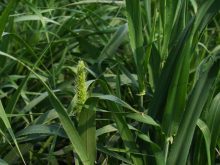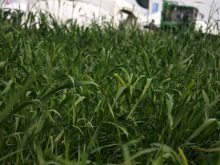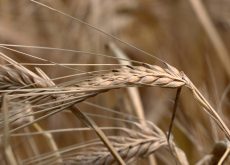Glacier FarmMedia – Next year’s recommended malting barley varieties include old maltster favourites and a few newer names.
The Canadian Malting Barley Technical Centre revealed its 2025-26 Recommended Barley Varieties List Nov. 21. Five varieties made the cut: AAC Connect, CDC Fraser, CDC Churchill, AAC Synergy and CDC Copeland.
The centre’s annual recommendations are based on the strength of a variety’s agronomic traits, malting characteristics and market demand. The guide is designed to help stakeholders meet the domestic and export needs of end users.
Read Also

Farmers asked to keep an eye out for space junk
Farmers and landowners east of Saskatoon are asked to watch for possible debris in their fields after the re-entry of a satellite in late September.
“These varieties reflect the strength and stability of Canada’s malting barley production while also supporting the development of new and innovative options,” wrote Peter Watts, managing director of the centre, in a news release.

Players across the value chain, including growers, processors, exporters and seed companies, were consulted in the centre’s decision process.
AAC Synergy, CDC Copeland and AAC Connect represent trusted standbys both domestically and for export, the centre noted. Newer varieties like CDC Fraser and CDC Churchill are steadily gaining traction with domestic producers and showing potential in export markets.
“With their agronomic strengths and processing performance, newer varieties like CDC Fraser and CDC Churchill are attracting interest from growers and buyers m alike,” wrote Jon White, the centre’s board chair.
“However, widespread adoption depends on finding the right balance. Growers need confidence in market opportunities, while buyers require consistent supply to meet their needs. Bridging this gap is critical to success.”
The guide also highlights malting options for specific market needs, including varieties for brewing and distilling, as well as emerging variety options under development.
Advances in malt barley genetics tend to move slower than they do with other commodities. Breeding companies have traditionally been cautious with new offerings and maltsters prefer older, proven genetics.
One of the 2025-26 list’s recommended varieties, CDC Copeland, was registered before the turn of the millennium.
Watts described the dilemma in 2022.
“It’s been difficult to get uptake of new varieties over the years by the malting and brewing industry, partly because we’ve had very successful varieties like AC Metcalfe and CDC Copeland,” he said during a field day near Wawanesa.
That same field day highlighted a new variety, AAC Prairie, which was also noted by the centre as a developing variety for the brewing market. Industry has noted less maltster reticence around newcomer varieties in recent years.
“With growing market acceptance of the newer varieties and the improvement in agronomy and disease packages, now is a good time for producers to consider adding a new malt variety to their rotation,” wrote Watts in the Nov. 21 release.
The centre works closely with the barley value chain to encourage adoption of new varieties.
“We rigorously test new varieties at the micro and pilot scale, and work with our partners to evaluate at the commercial scale to provide end users with the data to build confidence,” Watts said.
That ensures trust at the grower, maltster and brewery level when testing new varieties.
Full details of the 2025-26 list can be found on the centre’s website. The centre encourages malt barley growers to consult with their seed suppliers and malting companies to identify the best options for their farms and explore contract opportunities for the 2025 growing season.


















